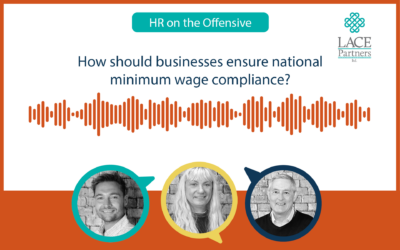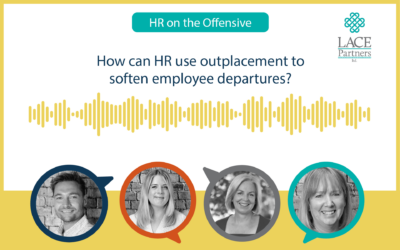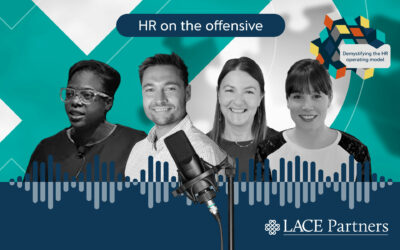What lessons has the last 18 months taught HR teams when it comes to getting better at analysing their people data and analytics? What impact with predictive analytics have in future? We reflect on all of these questions in this blog summarising the webinar we ran with Ceridian; Getting better with data: the time is now for HR.
There is also an additional podcast that was released – summarising some of the key talking points as Chris and Aaron discussed on the HR on the Offensive Podcast last week, which you can listen to here.
Key takeaways:
- Create a mindset of accountability around data – Everyone who is touching people data within your organisation need to understand the implications of getting the data right.
- Be consistent with data terminology – Make sure that each part of your organisation, in each location, know what you mean by your specific data points. Consistency of understanding across the business to key to unlocking the full power of reporting.
- Ask the right questions – What data do you need to solve the challenges you have?
- Don’t create data for the sake of creating data – Focus on what makes an impact for the outcome of the business to define how much effort you put in to collecting the data.
- Be clear about the benefits of getting good data principles in place – There is a general fear about how data will be used, but if employees understand what benefits it has for them, they will be more receptive.
To what extent do you think businesses are leaning into their current tech in comparison to those that are moving on to new HR technologies?
In our most recent webinar we heard from guest speaker Shelly Vokes, CPO at Scott Dunn about how important it was for their team to get the best from their existing systems during the pandemic. As an organisation in one of the worst hit industries it was essential to build a robust workforce planning model and they used existing technology Ceridian Dayforce to analyse their workforce underpin this strategy. However, each organisations story might be different. Whether or not an organisation wants to stick or twist involves multiple intersecting factors even without the further complications of the pandemic.
What there is certainty about, however, is that all HR Directors working through the pandemic will have had to lean on their people data in a way they never have before. The result of this is one of two outcomes; either it shows you that you can utilise the system you already have and potentially do more with it or you may realise the system cannot do what you need for the business.
At the moment the trend we are seeing most is the latter, which is resulting in something of a round of investment in the HR tech market. This is coupled with investments of time by organisations as they train their managers to use these systems. As Shelly highlighted during the webinar, a huge part of leveraging people data is about making sure that managers are accountable for their data and are aware of how to use it.
There are a million ways you can measure and cut data, but how can you determine what you really need?
As Wendy Muirhead, VP at Ceridian pointed out; ‘you can’t manage what you can’t measure’, so pulling out accurate, business critical data is key to organisational success. One learning that has come through the COVID period is a laser cut focus on what information people needed to understand their organisation. How and where has my business been impacted, do I need to put staff on furlough, what are the cost profiles of my business in each location?
Something which Steve Vanwieren, Head of Data & Analytics at Ceridian highlighted was that one of the traps that organisations can fall into is building data for the sake of data, rather than focusing on the outcomes and critical measuring points should be. Shelly shared how at Scott Dunn they have focused on five top KPIs which managers can use to measure productivity in the workforce uniformly across the business.
What other trends that we can expect in the data and analytics space?
Digitalisation has accelerated through the pandemic, which as Steve told us, has meant Ceridian like other technology providers have had to be very responsive to need. Ceridian for example optimised their data visualisation for reporting.
Predictive analytics, whereby organisations can use historical data, statistical algorithms and machine learning techniques to identify the likelihood of future outcomes has been increasingly an increasingly hot topic. That said, Aaron Alburey Co-founder & MD at LACE warns that predictive analytics should be there to inform so that a human being can take the most appropriate course of action – and that it should never be the sole driver of any action when it becomes to HR and people data.
This sentiment is echoed by Steve’s comments that data analytics need to be done in an ethical way, that predictive analytics are ‘a tool rather than a silver bullet’ and that data can be misleading. For example, from a D&I perspective if you are using predictive analytics in your hiring.
If you have questions on how you can better produce, use and leverage your people data, we would love to help. Get in touch using the form below and a member of the team will happily discuss this with you.









